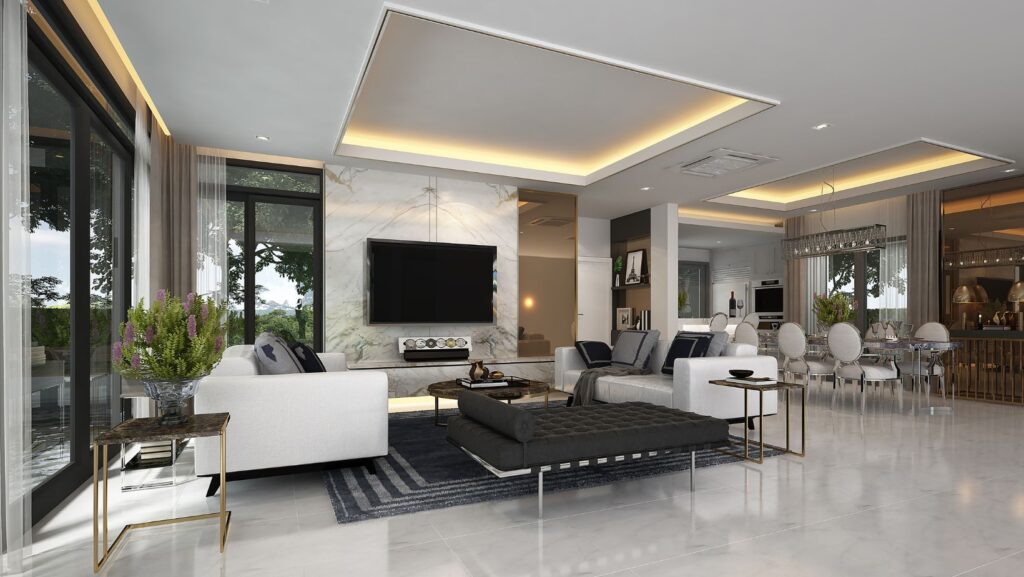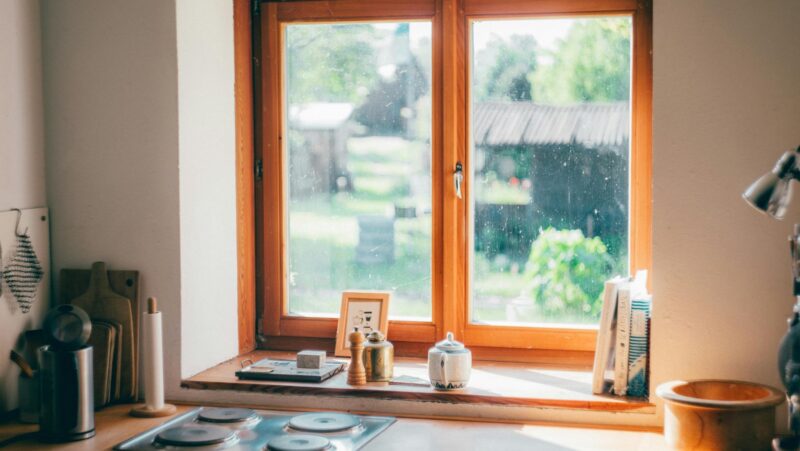
In today’s homes, the line between technology and interior design is becoming beautifully blurred. Gone are the days of bulky devices, tangled cords, and black plastic boxes that stuck out like a sore thumb in carefully curated living spaces. Today, smart home tech is not just about convenience—it’s about elegance. Welcome to the world of invisible decor.
This concept embraces technology that hides in plain sight, blending so seamlessly with your design that you barely notice it’s there. Whether it’s speakers hidden in the ceiling, TVs disguised as artwork, or lighting tucked into the architecture itself, invisible tech is elevating interiors across the board.
Let’s take a deep dive into how homeowners and designers alike are embracing this new era of style-meets-function.
Why Aesthetics Are Just as Important as Function
When we think of smart homes, we often focus on what the tech does—controls the lights, adjusts the temperature, or lets us stream music with a voice command. But what about how it looks?
Design-savvy homeowners know that clutter-free spaces promote a sense of calm. Visual noise—like wires, obtrusive devices, or mismatched appliances—can disrupt even the most intentional interiors. That’s where invisible decor steps in. Instead of forcing a compromise between functionality and beauty, it offers the best of both worlds.
Key Tech Innovations That Disappear Into Your Design
1. Built-in Audio: The Invisible Sound Experience
Imagine entering your living room and hearing your favorite playlist playing—yet you can’t see a single speaker. In-wall and in-ceiling audio systems have made this a reality. These speakers are flush-mounted and often painted to match the surrounding surfaces, blending effortlessly with the architecture.
Some brands even offer speakers that look like framed art or are hidden within furniture. You get immersive sound without a visual footprint. This tech is perfect for living rooms, dining areas, and even outdoor patios where aesthetics matter just as much as acoustics.
2. Television Disguises: Art, Mirrors, and More
One of the most impressive feats of invisible decor is the mirror TV. When turned off, it’s simply a stylish mirror on the wall. When powered on, it transforms into a high-definition screen. Ideal for bedrooms, bathrooms, or open-concept spaces, these hybrid designs save space and eliminate visual clutter.
Alternatively, some TVs like Samsung’s “The Frame” become art when not in use. The screen displays customizable artwork, making your entertainment system part of your decor rather than a distraction from it.
3. Smart Lighting That Fades Into the Background
Lighting is one of the easiest ways to blend technology with design. Smart lighting systems often use recessed fixtures, hidden LED strips, or architectural lighting built into crown molding and cabinetry. These setups can change color, brightness, and mood—all without standing out.
In bedrooms, you’ll even find custom-built furniture like triple bunk beds with integrated smart lighting. These kinds of clever solutions provide ambiance and functionality without taking away from the room’s aesthetic flow.
4. Discreet Charging and Power Solutions
As much as we rely on our gadgets, the visual mess of charging cables and power bricks is never pretty. Luckily, the latest power solutions focus on sleek integration. Pop-up outlets hidden in countertops, wireless charging pads embedded in desks and nightstands, and USB ports discreetly installed in furniture are all becoming standard.
Whether you’re working in a home office or just need to power your phone overnight, these tools maintain your design integrity while still delivering utility.
5. Voice Assistants & Control Systems That Stay Out of Sight
Voice-activated assistants like Alexa or Google Nest have become a mainstay of smart homes, but they don’t need to sit front-and-center on your shelf. Some homeowners choose to integrate them into walls, behind decorative panels, or inside furniture. Others use central control panels that are mounted flush into the wall, resembling a light switch more than a piece of tech.
This setup is particularly helpful for managing entire smart ecosystems—climate, music, security—without creating tech “hotspots” that stick out visually.
Room-by-Room Inspiration: Where Invisible Tech Shines
Living Room:
Hide your speakers in the ceiling, tuck away your subwoofer behind a sofa, and install a TV that looks like a painting. Add soft, smart lighting behind furniture or within shelving for an upscale touch.
Kitchen:
Use motion-activated lighting beneath cabinets, install charging stations in drawers, and hide your voice assistant in a planter or bookend. Even appliances can be integrated behind matching cabinet panels.
Bedroom:
Choose a bed frame with built-in lighting and USB ports. You’ll find modern options like these in custom children’s furniture as well—such as bunk bed setups with built-in storage and lights, which help maintain a clutter-free space for sleep and study alike.
Bathroom:
Smart mirrors with built-in lights, speakers, and defoggers are modern-day marvels. When turned off, they appear as regular mirrors. When on, they offer touchscreen functionality, lighting customization, and even news or weather updates.
Home Office:
Tidy cable management, built-in docking stations, and concealed monitors make a huge difference in maintaining a calm workspace. If you’re managing a lot of tech in your office—especially in a remote work setup—support services that focus on streamlined tech setups can help keep everything running smoothly without sacrificing your room’s aesthetic.
Achieving Balance: Don’t Overdo It
One of the challenges with invisible decor is knowing where to stop. Not every piece of technology needs to be hidden. Some gadgets—like a beautifully designed speaker or a statement light fixture—can serve as focal points.
The key is intentionality. Ask yourself: Does this enhance the visual flow of the space, or disrupt it? Prioritize tech that solves problems and complements your personal style.
Looking Ahead: Futuristic Tech You Won’t Believe Exists
As design and tech continue to evolve, we’re seeing innovations that feel like science fiction. Smart glass that transitions from transparent to opaque, ceiling-mounted projectors that blend into your light fixtures, and augmented reality mirrors that give you outfit recommendations are all pushing the boundaries of invisible living.
These technologies aren’t just flashy—they’re practical, efficient, and increasingly available in the consumer market.
Conclusion: A Seamless Way to Live
Invisible decor represents the perfect blend of utility and elegance. Whether you’re designing a minimalist studio apartment or updating a family home, there are countless ways to integrate technology without compromising your aesthetic vision.
By making thoughtful choices—like opting for hidden speakers, recessed lighting, and concealed charging—you can craft a space that’s as smart as it is stylish.
And if you’re setting up a smart home with multiple connected devices, it’s worth ensuring your systems are supported properly. A stable, well-managed infrastructure is what makes invisible tech work behind the scenes—and keeps it invisible. That’s where professional support services, especially those experienced with smart home environments like IT support providers in areas like Dallas, can make all the difference.
So, the next time you redesign a room or plan a new setup, ask yourself: How can I hide the tech without losing the magic?












